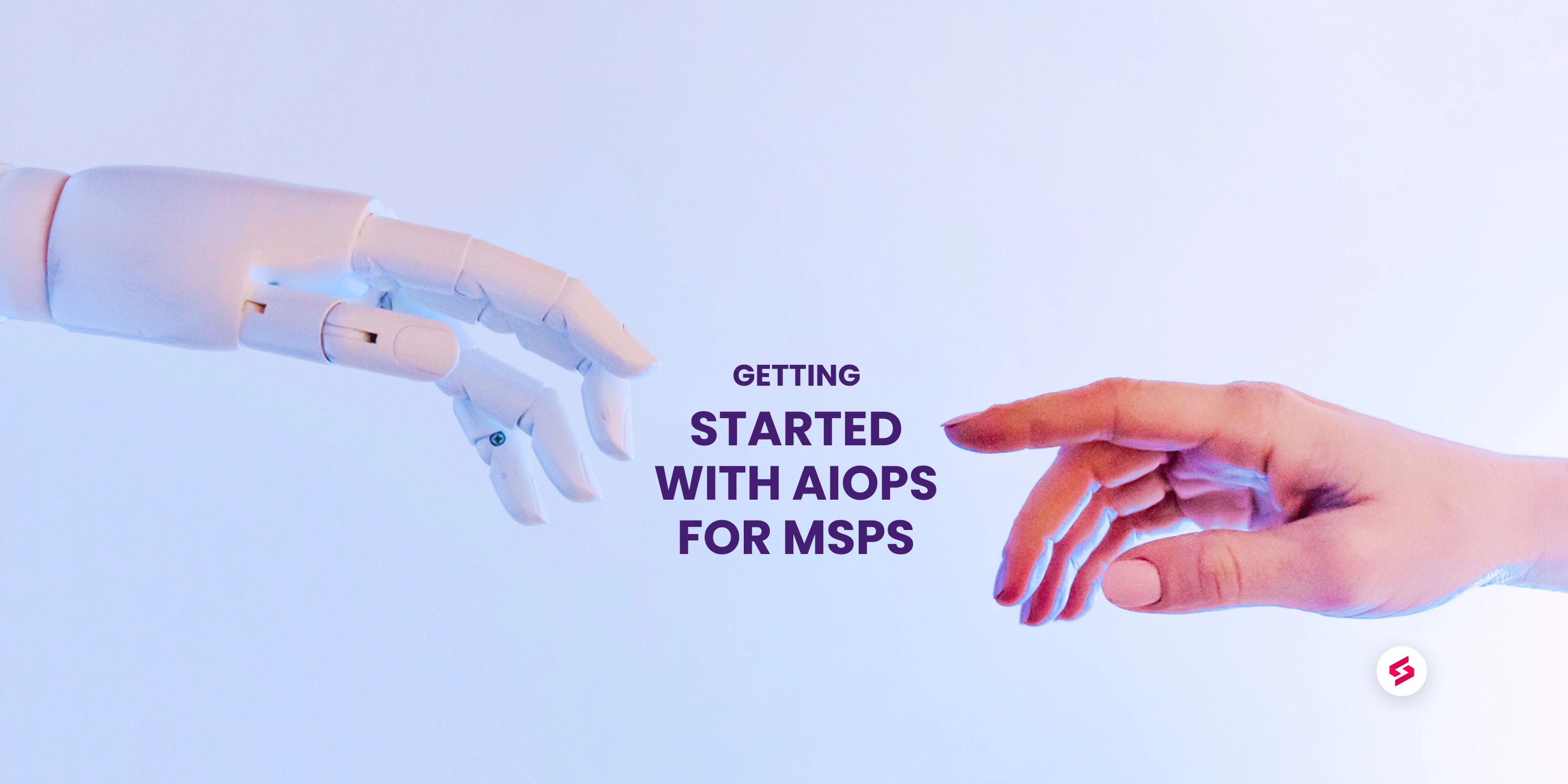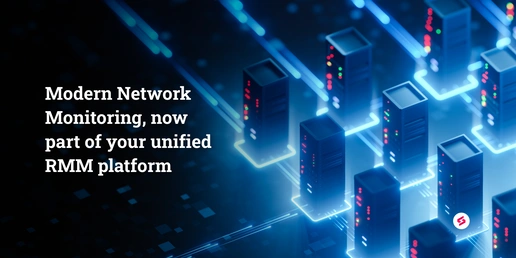Artificial intelligence or AI has become much more than a buzzword in the IT industry over the last few years.
Introduction
What makes AI so interesting is the fact that it resembles human intelligence and reasoning and is cost-effective. It makes tasks simpler and more efficient. MSPs have started to ditch legacy tools in favour of more powerful and efficient AI-enabled platforms.
What is AIOps?
AIOps is fundamentally artificial intelligence integrated into IT operations. AIOps makes use of machine learning and big data to improve and automate regular IT operations. AIOps is a technology that’s highly sought-after by tech leaders and IT organizations. Gartner predicts that enterprise usage of AIOps will increase from 5% in 2018 to 30% in 2023.

I think bringing AI as part of their service to understand what's going on. I think it's an important trend that MSPs need to be aware of, whether it's from understanding the operations of the customer or even understanding your own operations.
Jeff Ton Founder, Indy CIO Network |
Why do we need AIOps?
Scaling of constantly expanding IT environments
IT environments have come a long way from their traditional counterparts. They are now more dynamic and flexible than ever, with cloud and distributed architectures becoming more common. However, they have also grown much more complex and beyond the scope of human oversight. IT organizations are required to rely on a bunch of different monitoring tools. With AIOps, it’s possible to track and manage this complexity.
Alert Management
IT organizations need to manage thousands of alerts every month. Filtering out significant alerts is a tedious task akin to finding a needle in a haystack. AIOps manages alerts and uses alert correlation algorithms to minimize false alerts. This frees up the technicians to focus on what’s important and not be distracted by irrelevant alerts.
Root cause analysis
Problem-solving is a constant aspect of IT operations. AIOps’ root cause analysis allows your organization to have a system in place and is more effective than manually taking action as necessary. Root cause analysis identifies how and why an issue was created in the first place. Root cause analytics uses machine learning to identify infrastructure changes or alerts that lead to an issue.
Management of increasing volume of data
With more integrated applications and processes, the IT operations data is ever-increasing. It is important to declutter all this information and sort what’s important. This is where AIOps comes in. AIOps uses machine learning, anomaly detection, and analytic algorithms to correlate data across different environments and vastly improves visibility.
Refined user experience propelled by predictive analytics
Customer experience is key for IT companies. AIOps helps you in that area as well. Enter predictive analytics. AIOps uses its collected data to provide insights into issues before the end-user experiences them. It makes this possible by studying relevant data samples and identifying reference points, all the while being empowered by powerful machine learning algorithms.
How does AIOps function?
AIOps relies on data to make all of its decisions. It delves into big data (IT data with a size beyond the scope of traditional databases and tools) and zeroes in on relevant data. With focus analysis, it observes patterns and correlates selected data elements to group them further. With environment-specific algorithms, AIOps zeroes in on issues and remediates them. It uses machine learning to familiarize itself with issues and identify problems prior to their occurrence, enabling automated responses.
Key elements of AIOps
Machine learning
Machine learning refers to the application of AIOps that allows it to absorb information and automatically learn and improve from experience without requiring manual training. Machine learning creates new algorithms or alters existing ones based on new data.
Gartner defines a machine learning platform as “a cohesive software application that offers a mixture of basic building blocks essential both for creating many kinds of data science solutions and incorporating such solutions into business processes, surrounding infrastructure, and products.”
Big data
Big data refers to the extensive collection of ever-increasing IT data that is beyond the scope of human monitoring and traditional data monitoring tools. This data is extracted from various sources such as logs, monitoring events, and tickets. With a collection of information from otherwise isolated tools, big data brings this information together and allows for the processing of this data and analysis.
Machine learning taps into this repository to feed datasets, allowing AIOps to develop algorithms. These algorithms enable automated decision-making and problem-solving.
Automation
Automation is the final stage of AI processes. It’s the stage where outcomes generated through machine learning and big data are used to identify problems, create automated responses/problem remediation. It allows MSPs and IT organizations to greatly improve their service delivery.
AIOps benefits
Faster cause-identification
With a root cause analysis system in place, AIOps intelligently identifies root causes to problems. It enables faster and more accurate resolution of problems.
Knowledge recycling
Machine learning captures useful information in the background and its availability creates a contextual IT environment. Moreover, it enables context to improve algorithms and problem resolution.
Faster resolution
Faster mean time to resolution (MTTR) is achieved by powerful cause-identification and allows organizations to set better resolution time goals. With automation enabled, it cuts off the need for human intervention. It also enhances the customer experience.
Predictive alert identification
AIOps uses machine learning and pattern identification to look into historical data and recognize anomalies in the data. This provides ITOps predictive alerts for issues, thus reducing any chance of mishaps.
Future implications of AIOps for MSPs
AIOps is quickly gaining popularity in the IT industry and with good reason. It’s accurate and declutters IT operations. MSPs that have started leveraging AI are at an advantage because AI improves and streamlines the way their services are delivered.

It is important that we equip our business with new-age technologies like AI and ML in order to brace ourselves against hurdles that we were not prepared for, like the pandemic. AI is going to be a key driver in how we do business.
Arvind Parthiban CEO and Co-founder, SuperOps.ai |
The future implications of AI are huge and various industries are gradually adopting the technology. MarketsandMarkets predicts a combined annual growth rate of 34% for AIOps. Now is the ideal time for MSPs to reinvent their operation models by embracing AIOps.





